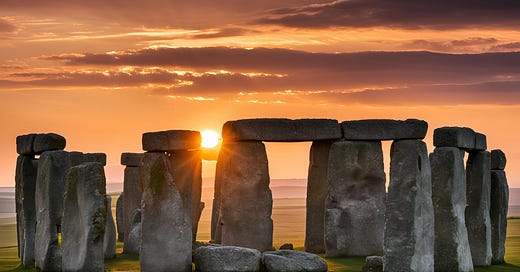Stonehenge. The name itself conjures images of ancient rituals, druids, and a connection to a distant past. This iconic monument has stood for millennia, a silent sentinel on Salisbury Plain. But the story of Stonehenge is more complex than just its ancient origins; it's a story of evolving perceptions, public access, and the sometimes uneasy balance between preserving history and catering to modern tourism.
From Sacred Site to Tourist Attraction
For centuries, Stonehenge has been a source of fascination and speculation. Who built it? Why? What ceremonies took place within its stone circle? These questions have fueled countless myths and legends, adding to the site's mystique. But in more recent times, Stonehenge has also become a major tourist attraction, drawing visitors from around the world.
This influx of tourism has led to a complex relationship with the monument. While it brings in much-needed revenue for preservation efforts, it also raises concerns about overcrowding, commercialization, and the potential impact on the site itself. Some visitors express disappointment, feeling that the reality of Stonehenge doesn't quite live up to the image they had in their minds. Perhaps they expected grander ceremonies or a more overtly "spiritual" atmosphere. Or perhaps the crowds and the barriers detract from the sense of awe they were hoping to experience.
A Whimsical Purchase: The Story of Cecil Chubb
The story of Stonehenge's ownership is as intriguing as its ancient history. In the early 19th century, the Antrobus family fenced off the monument and began charging for admission. This sparked controversy, particularly when druids were banned from holding their annual solstice celebrations. Legend has it that a curse was placed on the Antrobus family, adding another layer of mystery to the site's history.
Later, Stonehenge's fate took an unexpected turn. At an auction, a gentleman named Cecil Chubb, intending to purchase curtains for his home, found himself inexplicably bidding on and winning Stonehenge. His wife, it's said, was less than thrilled with this unexpected acquisition. However, Chubb's impulsive purchase ultimately proved to be a boon for the nation, as he later gifted Stonehenge to the public, ensuring its preservation for future generations.
The Balancing Act: Preservation and Public Access
Today, English Heritage manages Stonehenge, striving to balance the needs of preservation with the desires of the public. This is no easy task. The sheer number of visitors puts a strain on the site, and there are ongoing debates about how best to present the monument and interpret its history. Should the focus be on its ancient mysteries, the symbolism it holds for those who practice modern Druidry, or its more recent history as a tourist attraction?
The story of Stonehenge is a microcosm of the challenges involved in preserving and presenting historical sites. It's a reminder that these places are not static; they evolve over time, shaped by changing perceptions and societal needs. As we continue to visit and explore Stonehenge, we become part of its ongoing story, adding our own experiences and interpretations to the rich tapestry of its past.
What are your thoughts on Stonehenge? Have you visited the site? Share your experiences and reflections in the comments below!
For more on Stonehenge and sTone Circles check out episode 18 of the Wyrd Wessex podcast here
Or watch on YouTube here



